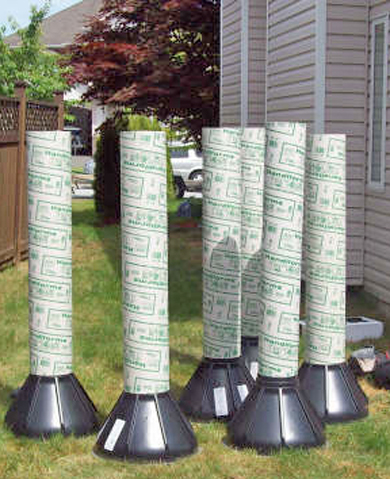Burying the wood post will cause it to rot prematurely. Even ground-contact rated Pressure Treated lumber won't last forever.
The only benefit of burying the post (besides it being easier to do) is lateral stability. i.e. you can sometimes neglect lateral bracing this way.
Best practice for wood-post decks is to have the concrete extend above grade and use a stand-off post anchor to hold the wood post to concrete.
Here is an example of this with some knee-braces for lateral bracing.
The braces don't match so I find this somewhat ugly, but the image is clear and easy to understand.

Footings here don't need to be deep so I often form my own square ones but sometimes I use bigfoot forms and I really like those. Although Shirlock's "mushroom" method is more than adequate if you are only required 8" wide.

